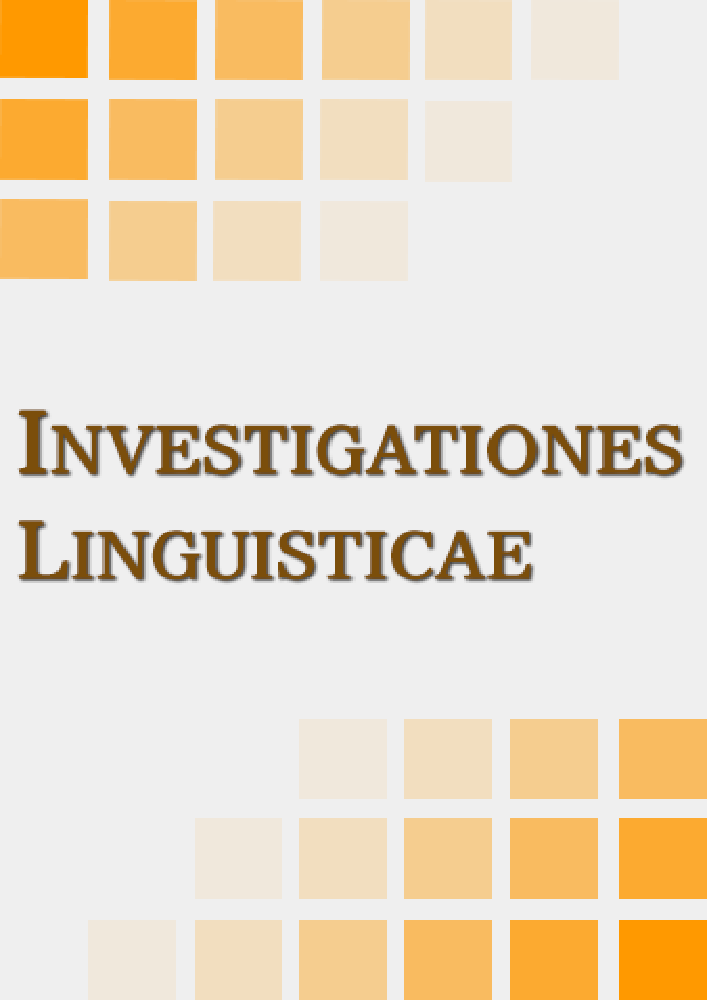Abstrakt
Po oswobodzeniu się w XIX wieku językoznawstwa węgierskiego z hamującego antyczno-średniowiecznego paradygmatu deskryptywnego, dogmatyzyjącego właściwości łaciny jako wszechobowiązujące, gramatycy węgierscy wydają się niestrudzenie ukuwać następną doktrynę zaciemniającą pewne istotne właściwości struktury semantycznej, morfosyntaktycznej i morfologicznej języka węgierskiego. Casus kontrowersyjnego tzw. biernika bezkońcówkowego (por. Várom a fiam ‘Oczekuję swojego syna’) posłużył do ujawnienia ich inklinacji metodologicznych polegających na wyraźnym faworyzowaniu podejścia analogicznego, formalnego, paradygmatycznego i (implicytnie) diachronizującego, kosztem zrównoważonego – zdaniem autora artykułu bardziej adekwatnego – podejścia uwzględniającego także zjawiska anomalne, semantyczne, syntagmatyczne i czysto synchroniczneBibliografia
Antal, L. 2005. A formális nyelvi elemzés. A magyar esetrendszer. Bicske: SZAK Kiadó.
Artowicz, E. 2003. Morfosyntaktyczny model języka w dawnych gramatykach węgierskich. Od Jánosa Sylvestra do Ferenca Verseghyego. Warszawa: Uniwersytet Warszawski Katedra Hungarystyki.
Bielecki, R. 2010. Does the Genitive Operate in the Hungarian Case System?
I. The é-Genitive. Lingua Posnaniensis, vol. LII (2), pp. 7–25.
Bielecki, R. 2011. Does the Genitive Operate in the Hungarian Case System?
II. The Ø-/nak-/nek-Genitive. Lingua Posnaniensis, vol. LIII (1), pp. 25–40.
Blake, B. J. 1997. Case. Cambridge: Cambridge University Press.
Böhtlingk, O. 1998. Pâṇini’s Grammatik. Delhi: Motilal Banarsidass Publishers.
Bursill-Hall, G. L. 1972. Grammatica Speculativa of Thomas of Erfurt. Londyn: Longman.
É. Kiss, K., Kiefer, F., Siptár, P. 1999. Új magyar nyelvtan. Budapeszt: Osiris Kiadó.
Fedjunëva, G. V. (Ed.). 2000. Öнiя коми кыв. Морфология. Syktywkar: Коми небöг лэдзанiн.
Gaál, E. 2002. A magyar nyelv kis könyve. Budapeszt: Műszaki Könyvkiadó.
Hegedűs, R. 2005. Magyar nyelvtan. Formák, funkciók, összefüggések. Budapeszt: Tinta Könyvkiadó.
Heinz, A. 1978. Dzieje językoznawstwa w zarysie. Warszawa: Państwowe Wy-dawnictwo Naukowe.
Hjelmslev, L. 1935. La catégorie des cas. Étude de grammaire générale. Première partie. Acta Jutlandica, vol. VII 1, pp. 1–184.
Hjelmslev, L. 1968. Prolégomène à une théorie du langage. Paryż: Les Éditions de Minuit.
Itkonen, E. 1991. Universal History of Linguistics. India, China, Arabia, Europe, Amsterdam–Filadelfia: John Benjamins Publishing Company.
Jászó, A. (Ed.). 1995. A magyar nyelv könyve. Budapeszt: Trezor Kiadó.
Keil, H. (Ed.). 1855. Grammatici Latini II. Leipzig: B. G. Teubner Verlag.
Keszler, B. (Ed.). 2000. Magyar grammatika. Budapeszt: Nemzeti Tankönyv¬kiadó.
Kiefer, F. (Ed.). 2000. Strukturális magyar nyelvtan. Budapeszt: Akadémiai Kiadó.
Kiefer, F. (Ed.). 2006. Magyar nyelv. Budapeszt: Akadémiai Kiadó.
Lancelot, C., Arnauld, A. 1780. Grammaire générale et raisonnée, Contenant Les fondemens de l'art de parler, expliqués d'une manière claire & naturelle; Les raisons de ce qui est commun à toutes les Langues; & des principales différences qui s’y rencontrent; Et plusieurs remarques nouvelles sur la Langue Françoise. Paryż: Durand neveu.
Nebrija, A. de. 1909. Gramática castellana. Halle: Max Niemeyer.
Perevoščikov, P. N. (Ed.). 1962. Грамматика современного удмуртского языка. Фонетика и морфология. Iżewsk: Удмуртское Книжное Издательство.
Rácz, E. (Ed.). 1968. A mai magyar nyelv. Budapeszt: Tankönyvkiadó.
Robins, R. H. 1967. A Short History of Linguistics, Londyn: G. Bell & Sons Ltd.
Saussure, F. de. 2002. Kurs językoznawstwa ogólnego. Warszawa: Wydawnictwo Naukowe PWN.
Temesi, M., Rónai, B. 1972. A leíró magyar nyelvtan alapjai. Budapeszt: Tan-könyvkiadó.
Thrax, D. 1874. The Grammar of Dionysios Thrax. Saint Louis: Studley Company.
Tompa, J. (Ed.). 1970. A mai magyar nyelv rendszere. Leíró nylevtan. I. Budapeszt: Akadémiai Kiadó.
